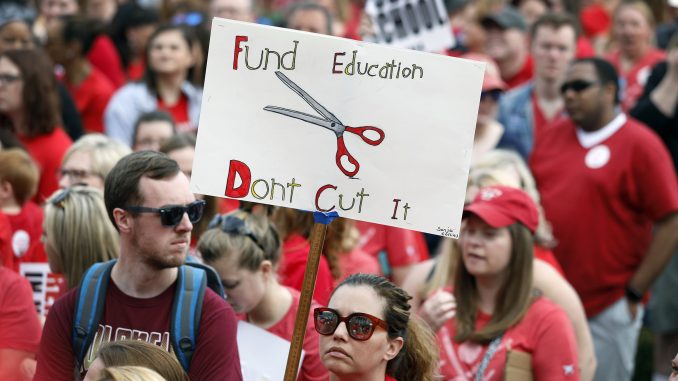
As they do every year, school superintendents and principals across the country have made their speeches about their hopes for the new school year. But reality doesn’t inspire much hope. While the high school graduation rate is about 91 percent nationwide, the rates of high school seniors who test “proficient” are just 37 percent in English and 25 percent in math. About 60 percent of first-year college students take remedial courses to bring their reading, writing, and math skills up. And the cost of going to college has continued to skyrocket, piling an average of $37,000 in debt onto students who are unable to pay. As a result, many students leave college early and never get the education they need and deserve.
Despite all this, total education spending per student is greater in the U.S. than in any other country. But in international education ratings, the U.S. ranks 14th best in the world, behind mostly Asian and European countries, including South Korea, Poland, and Russia. This is important, not because of rankings, but because it shows the general poor quality of education in the U.S.
Since 2008, states across the country have made drastic cuts to K-12 funding, a reduction of over $23 billion. And the number of K-12 teachers and other school workers has fallen by 135,000 since 2008 while the number of students has risen by 1,419,000. Many students in wealthier communities go to public schools that are far better equipped and have the most experienced teachers compared to impoverished communities, which are disproportionately communities of color. Students in impoverished communities rarely have new textbooks, computers, or other technology, and often lack adequate heat, air conditioning, or clean water.
The recent strikes of teachers and education workers in several states have exposed the criminally poor compensation that these workers receive. And policymakers, led by both Obama and Trump, have touted charter schools as an education strategy that, among other problems, often pays teachers less than regular public schools. Both Democrats and Republicans are responsible for education policies that fail students, families, and communities – from Bush’s “No Child Left Behind” and Obama’s “Race to the Top” to the Trump administration’s intensification of charter schools and for-profit vocational colleges.
Education funding at the federal, state, and local levels does not address disparities in students’ needs. For example, studies have shown that students who do not have intellectually stimulating activities during the summer tend to lose two to three months of learning by the time they go back to school. But students from families with more money can go to summer camps focusing on math, reading, science, or the arts. Those from less affluent families don’t have the same opportunities and may spend the summer in front of the TV or hanging on the corner. Research shows that this inequality in wealth generally accounts for a significant achievement gap by ninth grade. But impoverished school systems can’t spend to develop summer programming without cutting school year budgets, which are already too low. So the result is there is one kind of education reserved for the rich, and another one for the working class and the poor.
The 1954 Supreme Court decision, Brown v. Board of Education, was supposed to put an end to segregated schooling across the country and provide quality education for all. But this hasn’t happened. Because of the racism of our society, schools still remain deeply segregated, mirroring the segregation of our neighborhoods. The result is that if you live in a poor neighborhood, the chances are your school is underfunded. And so Black and Brown students continue to go to schools that are underfunded compared to predominantly white schools.
The politicians, and the banks and corporations they work for, don’t care about the quality of schools for working class children. Schools function to turn out lots of workers for low-paying jobs and far fewer college-educated people to keep the bosses’ system running. Only a national movement to demand well-funded quality schools for all could begin to address this system-wide problem.
But there is hope in 2018! The students from Parkland, Florida showed they could spark a nationwide movement against gun violence in schools. Teachers across West Virginia and several other states have shown they could break the law and go on strike to get better funding for education. And now it is up to students and educators, together with workers in general to show that we are ready to unite to get the kind of schools and lives we need. We can’t let racism divide us. We can’t let the bosses’ laws keep us in check. We can follow the lead of the students and teachers who have said and continue to say, “No more!”

